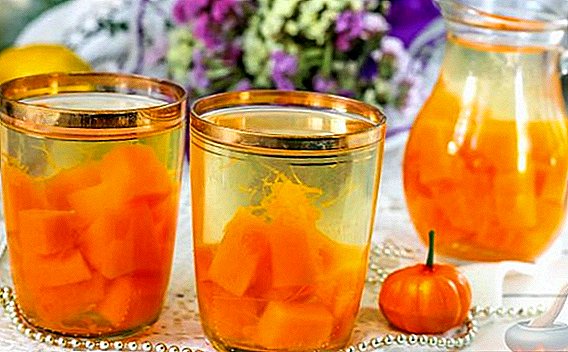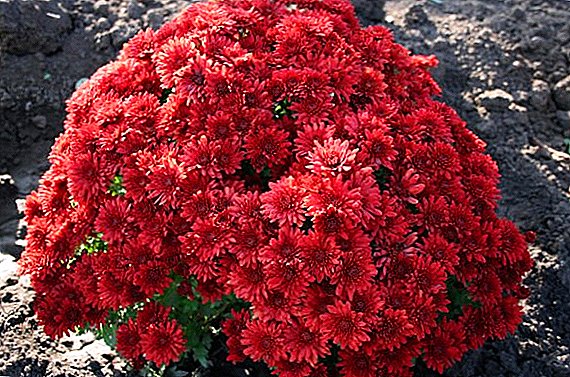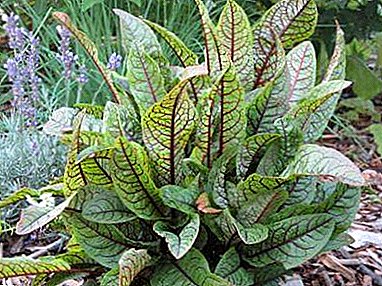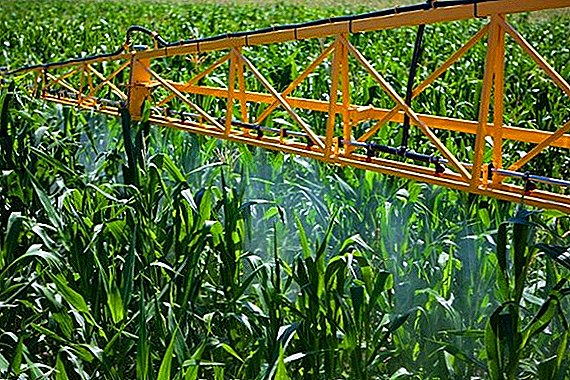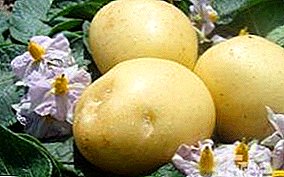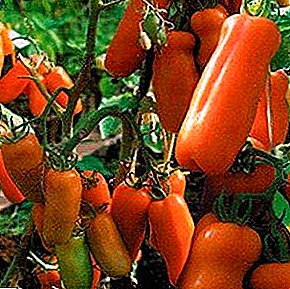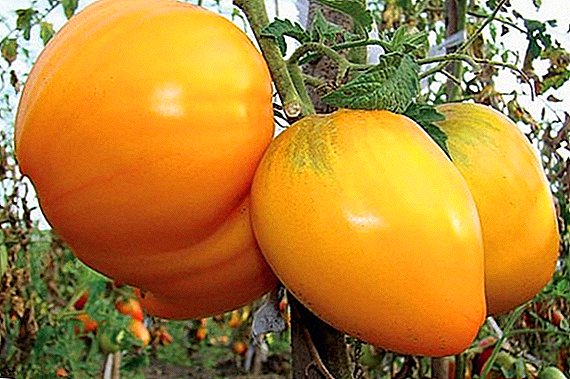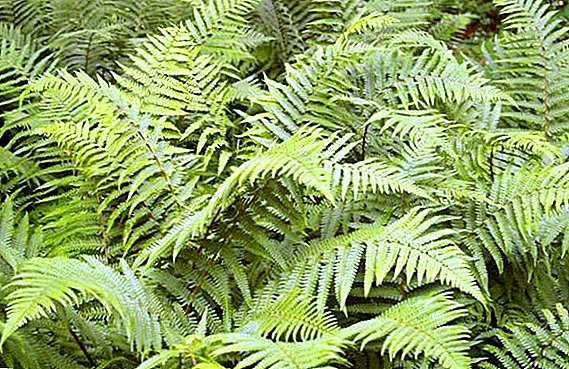 Our ancestors spent a large amount of time and effort to determine the beneficial properties of various plants and their possible use in everyday life. The cases where the efforts were completely worth the effort, include a fern - the plant is not only very beautiful, but certainly necessary for human life. Consider in the article the types, useful properties, features of the application and preparation of this representative flora.
Our ancestors spent a large amount of time and effort to determine the beneficial properties of various plants and their possible use in everyday life. The cases where the efforts were completely worth the effort, include a fern - the plant is not only very beautiful, but certainly necessary for human life. Consider in the article the types, useful properties, features of the application and preparation of this representative flora.
Description
Shchitovnik is a genus of ferns, which has more than 150 species. Greek name of this genus - Dryopteris - literally translates as "fern of oak forests."  These are perennial herbaceous plants of rather large sizes. Most common in the temperate climate zone of the Northern Hemisphere, although they are found around the globe - from the cold regions of Eurasia to the tropics of Africa, Asia and South America.
These are perennial herbaceous plants of rather large sizes. Most common in the temperate climate zone of the Northern Hemisphere, although they are found around the globe - from the cold regions of Eurasia to the tropics of Africa, Asia and South America.
The ferns also include Asplenium, Pteris, Platicerium, Polypodium, Polynomial, Adiantum, Damalia, Pelleya, Nephrolepis.The fern grows on rocky cliffs and slopes and is itself quite unpretentious and frost-resistant.
Appearance of plants:
- have a short and strong rhizome, covered with either glands or wide scales. The rhizome itself rises from the ground;
- leaves hard, light green. There are 2 types: double pinnate lanceolate or triple pinnate triangular. Rarely leaves are collected in bundles of the correct form (nesting or funnel-shaped);
- on the underside of the leaflets, rows or randomly arranged sporangia (rounded or oval).

Did you know? According to Slavic legends, the fern blooms for a moment on the night before the holiday of Ivan Kupala. Anyone who can find a flower will know the secrets of the world and discover its treasures.
Kinds
Although there are a lot of fern species, some of them are more popular and are most common:
- Male: the forest belt of Eurasia is its main habitat. It grows in deciduous forests, on slopes, loves well moist and rich soil. Feels best in the shade. The leaves are coarse, oblong and have a distinctive peculiar smell. This type of plant has several cultural forms, often used in landscape design.

- Odorous: Habitats - Siberia, China and North America. It grows on rocks and scree. A special feature is the presence of hibernating leaves. The foliage is saturated green and has a pleasant aroma. Plant height on average reaches 30 cm.

- Comb: The main distribution area is Europe and Siberia. It grows in swampy forests and moss swamps, most often among other shrubs. This is a perennial plant that has dark green comb leaves up to 60 cm long.

- Field: common in areas with acidic soils (swamps and wet fields), as well as on meadows and in damp forests. This species especially needs moisture and does not tolerate dehydration. It has a large root, long stems and large feathery leaves, which have a complex structure.

- Needle: distributed in the Caucasus, in the European part of Russia, western Siberia and some regions of North America. It grows in coniferous and very moist forests. It has a unique oblique thick rhizome of a scaly type. A special characteristic difference is the bare plate of the sheet below. Reaches 80 cm in height.

Chemical composition
Fern is used not only in landscape design, but also in cooking and medicine. This is due to the fact that the plant has an original taste (similar to asparagus) and a rich composition.
Nutritional value (per 100 g of product):
- proteins 4.6 g;
- fats - 0.4 g;
- carbohydrates - 5.5 g;
- water - 88.68 g
Caloric content is only 34 kcal per 100 g of fresh plants.
Trace elements:
- nickel;
- potassium;
- calcium;
- iodine;
- manganese;
- phosphorus;
- sodium;
- magnesium;
- copper;
- sulfur.

Therapeutic components:
- flavonoids;
- tannins;
- essential oils and fats;
- various acids (nicotinic, glutamic, cyanide and others);
- alkaloids;
- starch substances;
- carotene;
- riboflavin;
- enzymes (glycoside, thiaminase and others).
Beneficial features
Fern is used in cooking and medicine, as it has a number of useful properties. 
Due to its composition, which is rich in various medicinal components, the plant has the following abilities:
- strengthens and forms the correct skeleton;
- improves the nervous system;
- normalizes metabolism;
- has a tonic, sedative, disinfectant, antibacterial and antispasmodic action;
- cleanses the body of toxins;
- strengthens the immune system;
- solves many skin problems (eczema, rashes, non-healing lesions);
- effective for chronic headaches;
Learn how to treat headaches with willow, echinacea, viburnum, clover, clary sage, lemon balm, cyanosis blue.
- used in the treatment of constipation;
- relieves rheumatic pains;
- fights parasites.
It is important to remember that fern has many dangerous qualities that adversely affect human health. In order not to bring yourself more harm than good, do not use this plant without consulting a doctor. 
Application
Both leaves and fern rhizomes are used. They make decoctions, tinctures, dry powders and elixirs. For each individual disease use a more appropriate form of medication.
Fern Leaf Remedies:
- Broth - 1 tbsp. l dry leaves of a plant pour a glass of water and boil for 15 minutes. Cool and strain. It is used to combat parasites.
- With leukemia 1 tsp. dry leaves of the plant per day added to food (salads, main dishes). Reception course - 1 month.
- To normalize sleep and improve its quality, dry leaves of the plant are placed in a mattress.
- From the young shoots of the plant they prepare many dishes (salads, various snacks), which have a preventive, curative and restorative effect.
Preparations from the rhizomes of this plant have strong antihelminthic and cleansing properties.
Anti-helminthic properties are the grass sedge, rokambol.The decoction is effective for mental and nervous disorders, diarrhea and disorders of the gastrointestinal tract.
 Topical use relieves pain, cramping and eases the occurrence of diseases such as rheumatism, arthritis and neuralgia.
Topical use relieves pain, cramping and eases the occurrence of diseases such as rheumatism, arthritis and neuralgia.Remedies of fern rhizomes:
- Broth - 10 grams of dry ground rhizomes of a plant pour a glass of water and cook on low heat. When the liquid is reduced by 2 times, it is necessary to remove the broth from the heat and cool. After drain, pour into the container for storage and put in the refrigerator. Used mainly in the fight against tape parasites.
- Broth for external use - 200 grams of dry ground rhizomes of a plant pour 2 liters of water. Cook over low heat for about 2 hours with the lid closed. After cool and strain. Used for therapeutic baths and various lotions.
- Tincture - take 1 part of the dry crushed rhizomes of the plant and 4 parts of 70% alcohol. Insist 14 days, occasionally shaking, after filtering. It is applied externally (rubbed into painful places).
- In case of varicose veins, it is necessary to mix a dry, crushed rhizome of a plant with sour milk, before the formation of a gruel. This means impose on problem areas, wrap with gauze and hold for 5-6 hours.
When varicose veins are used tarragon, hazel, iglitsa, fragrant rute, ivy-like budru, irgu, carrot, elder.

Did you know? Ferns appeared on the planet another 350 million years ago and are relict plants, because they have been preserved since the time of dinosaurs.
Harm and contraindications
Despite the fact that the plant has many useful properties, it also has contraindications. Fern contains toxic substances, which makes its use impossible for some groups of people.
Poisonous substances also contain European dodder, dieffenbachia, cyclamen, cassia, goldenrod.The use of this plant is strictly prohibited for pregnant and lactating women. Children can only use it from 2 years old.
You also can not use the fern for people with these diseases:
- tuberculosis;
- anemia;
- fever;
- problems with the work of the liver and kidneys;
- stomach ulcer and duodenal ulcer.

Important! Even if you do not belong to any of the groups described above, before using fern (or preparations based on it), you still need to consult with an experienced doctor.
Symptoms of overdose, in which an urgent need to clear the stomach (take a saline laxative) and call a doctor:
- nausea and vomiting;
- convulsions;
- severe and severe headache, dizziness;
- lowering blood pressure;
- problematic breathing;
- decrease in cordial activity.
Stocking
Fern collection begins with the arrival of May. But then there are not very many young shoots (rachises), and collecting them for a long time. By the middle of May there are more of them, and then a massive gathering begins.  The fern grows quickly, and young shoots over time becomes not much, so it is important not to miss the right period.
The fern grows quickly, and young shoots over time becomes not much, so it is important not to miss the right period.
Petioles are cut with a height of no more than 20-30 cm on plants up to 6 days old. At such times, toxic substances are not yet deposited in them, and their use is safe.
The average growth rate of a fern is 6-8 cm per day (it depends on whether it grows in the sun or in the shade), therefore a 5-6 day plant has a growth of about 30 cm. It is growth that is an indicator of the safety of a fern.
But too young shoots are also not suitable for collection. It is believed that the highest concentration of nutrients is in plants 3-5 days of age.
The collected shoots are tied up in bundles 5-7 cm in diameter and tied with a rubber band, and the uneven ends of the shoots are leveled with a knife or scissors. 
Important! Fern strongly absorbs and accumulates toxic substances, so you can not collect the plant in contaminated places (close to roads, industrial zones and landfills).
There are several types of procurement of this plant. One of the most common is drying.
To do this at home is not difficult:
- Sprouts should be placed in a pot of boiling lightly salted water and cook 1-3 minutes after boiling. The total heat treatment time should not exceed 8 minutes. After that, fold the raw material on a sieve and dry.
- Spread out on thick paper, cloth or fine mesh. It is not advisable to use different types of oil. It can also be dried in an oven at temperatures up to 50 ° C, but the method of natural drying is preferable.
- Place in a dry and well ventilated place (attic is ideal). Under optimal conditions, the fern dries completely in 3-5 days.
- Check the seedlings several times a day and, if necessary, turn them over.
- Dry plant folded in a dense fabric bag and hang from the ceiling to normalize the level of moisture for several days.
- Transfer to the container for long-term storage.
 Properly dried fern can be stored for several years without loss of useful qualities. But an important factor is the conditions in which the dry plant will be.
Properly dried fern can be stored for several years without loss of useful qualities. But an important factor is the conditions in which the dry plant will be.In rooms with low humidity, sprouts are not afraid of storage in fabric or paper bags, but at high humidity it is necessary to put the blanks in glass or metal dishes.
If the humidity in the room is higher than 72%, then the fern must be shifted into a hermetically sealed container. Check the status of your blanks should be regularly, if necessary, you should dry the plant in the sun or at the minimum temperature in the oven.
Proper preparation and reasonable use of fern will help you diversify the diet of useful and unusual plant. The main thing is to comply with all necessary safety measures and carefully consider your health!




